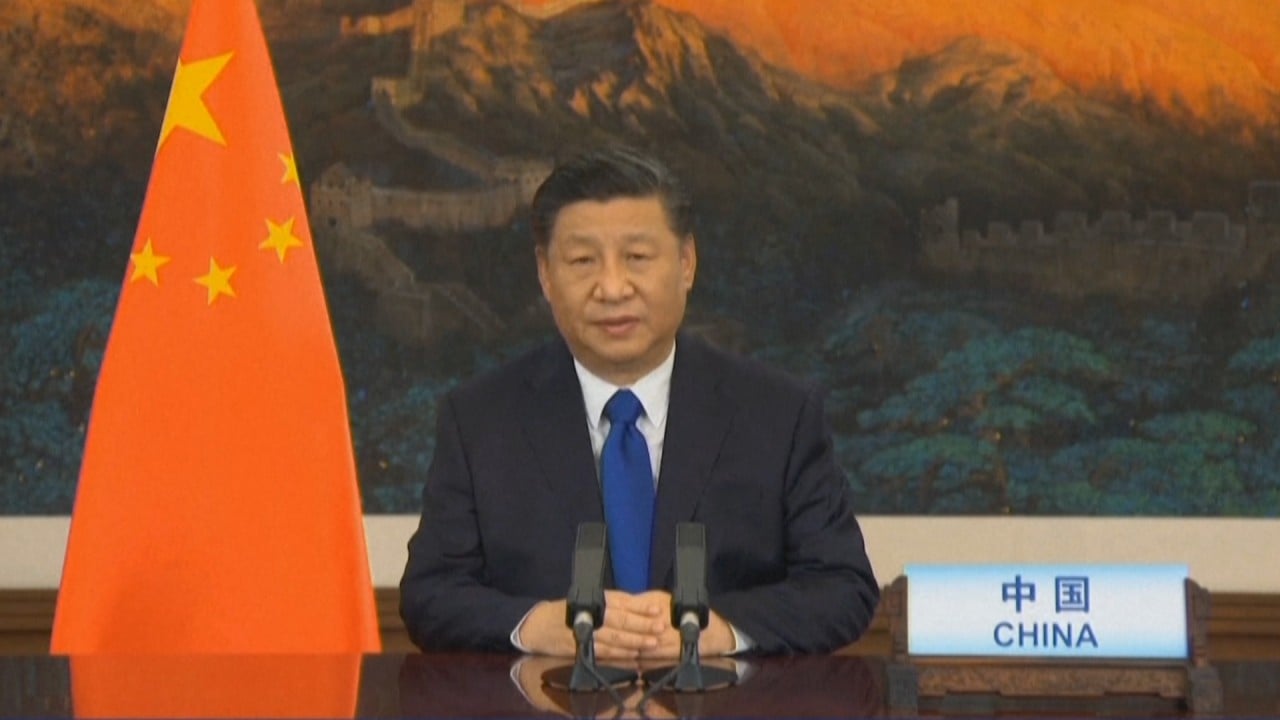
China aims for greener energy mix with higher non-fossil fuel target
- Beijing’s 2025 goal is in line with climate commitments made last year by Xi Jinping, analysts say
- Wind and solar sources offer best potential, given nuclear reactor risks and little room for hydropower growth
China has advanced plans to reduce dependence on fossil fuels, bringing national targets in line with global climate commitments made last year.
Energy analysts said this target matched expectations following Chinese President Xi Jinping’s announcement last year that non-fossil fuels would account for around 25 per cent by 2030, up from the previous commitment of 20 per cent by 2030 made as part of the 2015 Paris agreement on climate change.

01:24
China to reduce carbon emissions by over 65 per cent, Xi Jinping says
China is the world’s biggest greenhouse gas emitter and will have to dramatically ramp up sources of energy other than coal, petroleum, and natural gas to achieve its goals.
In the past decade, energy output from non-fossil fuels has grown by 3-4 per cent every five years in China, according to a report published by research firm IHS Markit in December.
Meanwhile, about 20 per cent of US energy consumption in 2019 came from sources other than fossil fuels.
Energy analysts said China was expected to reach its 2025 target with a boost to hydro and nuclear power but would need to step up solar and wind energy production to make much further progress.
“For many years hydropower was the very major source of modern renewable energy in China. This is now changing rapidly, as especially solar power and wind energy is being installed with excessive growth rates,” said Ole Odgaard, a Denmark-based energy consultant on China.
Odgaard said the share of renewables in the power sector would increase to nearly 40 per cent by 2030, citing International Renewable Energy Agency estimates.
China’s ‘two sessions’: five-year plan is key to reaching Xi’s environmental and carbon neutrality goals
According to the five-year plan, China is expected to have 70 gigawatts of nuclear power capacity in operation by 2025 and boost dam construction and use of wind power.
However, China was about 5GW short of its 58GW nuclear power target for 2020 in its previous five-year plan, with Beijing cutting back on approvals for new reactors in the aftermath of the Fukushima disaster.
Ma Jun, director of the Beijing-based Institute of Public and Environmental Affairs, said the potential risks and damage to the environment from nuclear power could be much higher than with renewable energy, and so he expected the government to put in more effort into developing solar and wind energy.
“The country is rich in these two types of renewable energy and the cost of generating them is going down at a quick rate. They are much more sustainable as we move forward to achieve the non-fossil fuel target,” Ma said.
He said the government was expected to lay out more specific policies later on to tackle challenges in the application, transmission and storage of solar and wind energy.

01:43
Japan aims to be carbon neutral by 2050, says Prime Minister Suga
Despite renewing targets for non-fossil fuel energy, China put 38.4GW of new coal-fired power capacity into operation in 2020. This is more than three times the amount built elsewhere around the world during the year, according to research published in February by Global Energy Monitor, a San Francisco-based non-profit on clean energy development, and the Centre for Research on Energy and Clean Air in Helsinki.
Odgaard said China must examine whether it could meet its international commitments on carbon dioxide emissions.


